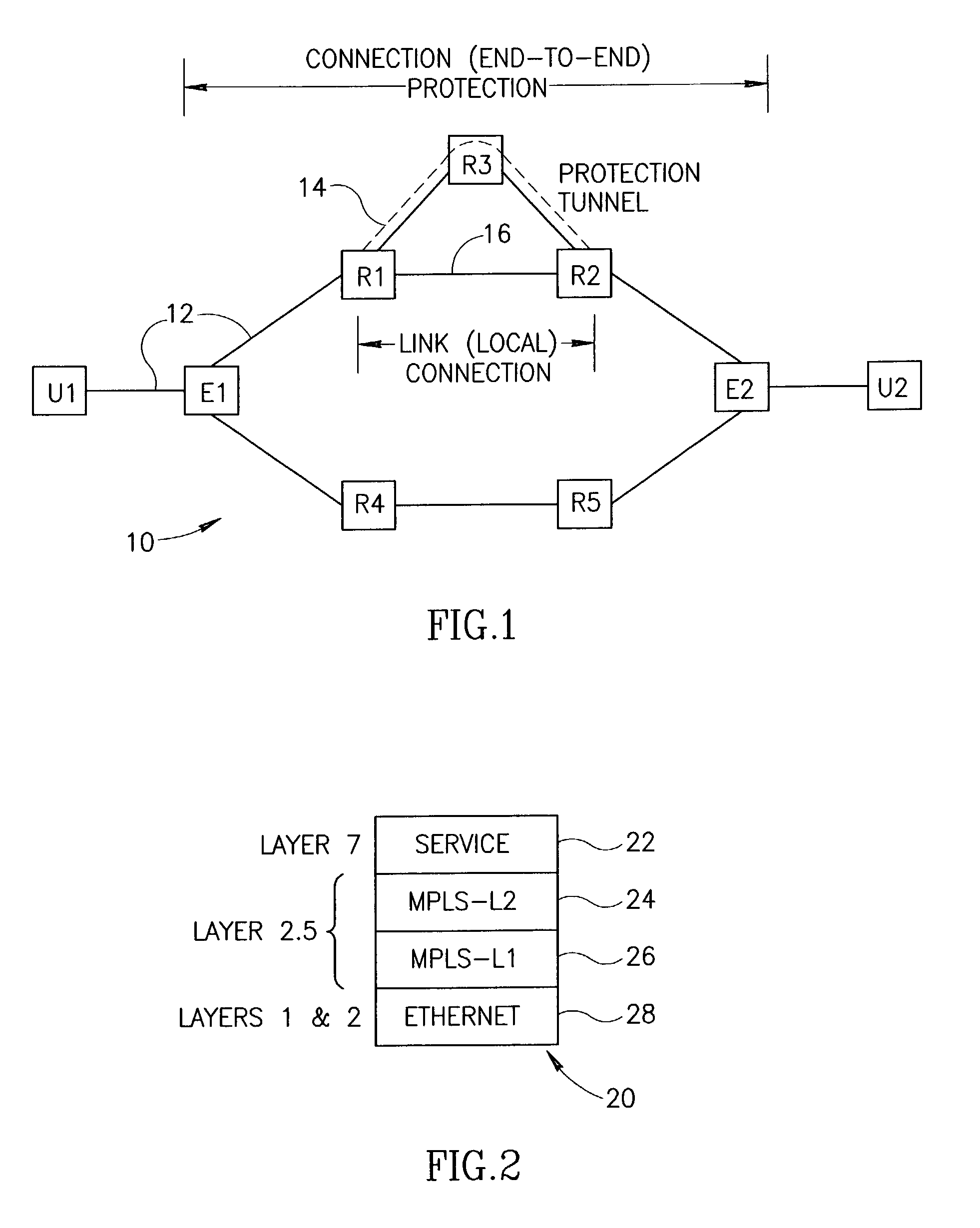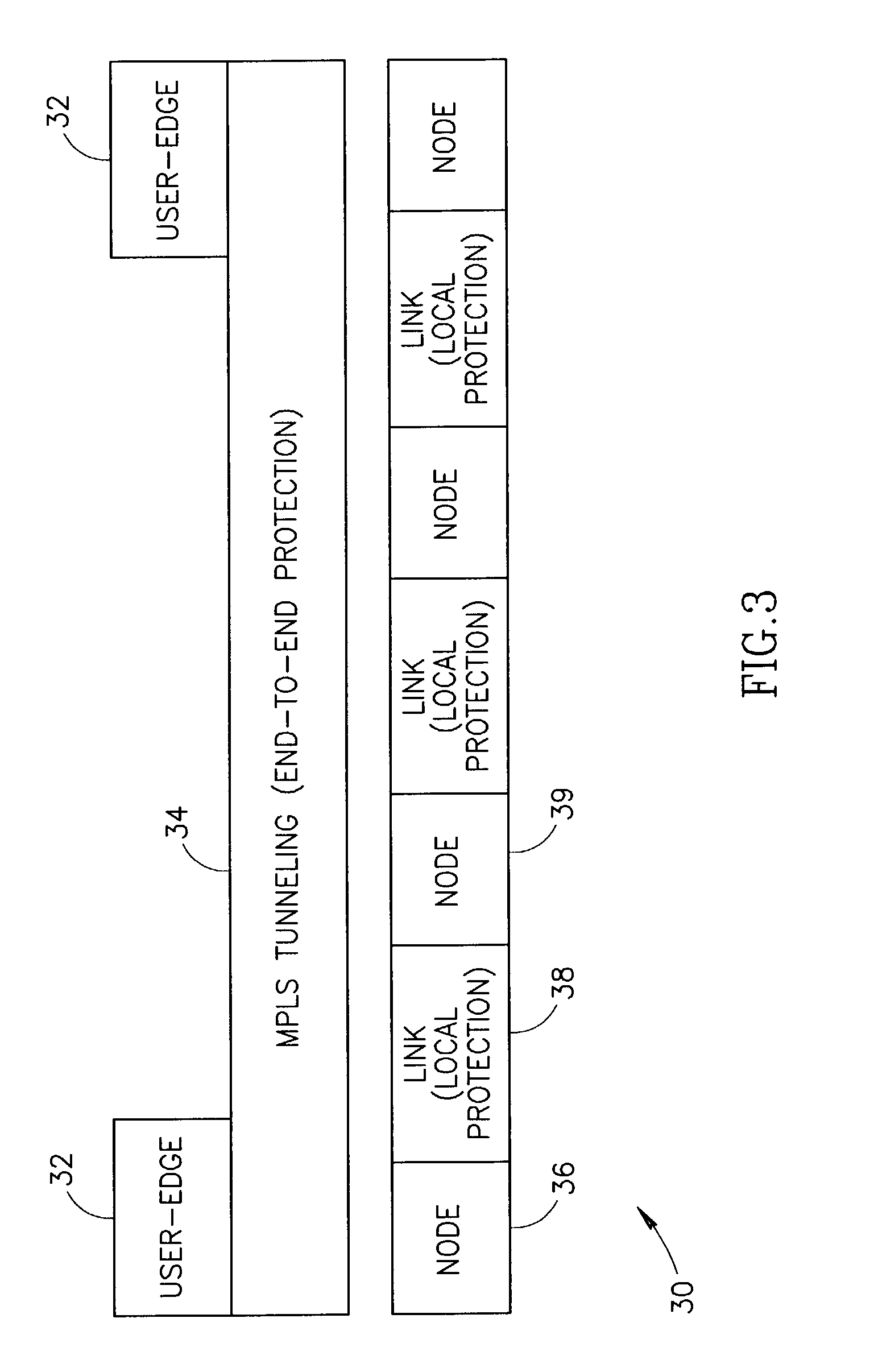End-to-end notification of local protection using OAM protocol
a technology of end-to-end protection and local protection, applied in the field of data communication, can solve the problems of slow end-to-end protection, slow local protection, and low priority traffi
- Summary
- Abstract
- Description
- Claims
- Application Information
AI Technical Summary
Benefits of technology
Problems solved by technology
Method used
Image
Examples
embodiment
Network Device Embodiment
[0089]A network device can be adapted to implement the local protection notification mechanism of the present invention. Hardware means and / or software means adapted to execute the mechanism may be incorporated within a network device such as a Network Management System, Label Switching Router (LSR), network switch or any other wired or wireless network device. The device may be constructed using any combination of hardware and / or software.
[0090]A block diagram illustrating an example network device such as a switch router incorporating the local protection notification mechanism of the present invention is shown in FIG. 11. The network device, generally referenced 180, comprises a processor 190 which may be implemented as a microcontroller, microprocessor, microcomputer, ASIC core, FPGA core, central processing unit (CPU) or digital signal processor (DSP) or any other suitable computing means. The system further comprises non volatile memory including EEPRO...
PUM
 Login to View More
Login to View More Abstract
Description
Claims
Application Information
 Login to View More
Login to View More - R&D
- Intellectual Property
- Life Sciences
- Materials
- Tech Scout
- Unparalleled Data Quality
- Higher Quality Content
- 60% Fewer Hallucinations
Browse by: Latest US Patents, China's latest patents, Technical Efficacy Thesaurus, Application Domain, Technology Topic, Popular Technical Reports.
© 2025 PatSnap. All rights reserved.Legal|Privacy policy|Modern Slavery Act Transparency Statement|Sitemap|About US| Contact US: help@patsnap.com



